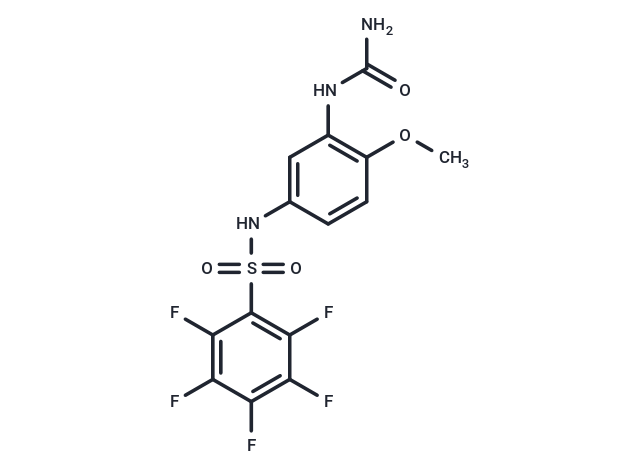Shopping Cart
- Remove All
 Your shopping cart is currently empty
Your shopping cart is currently empty

T-900607 is a novel microtubule protein active agent that disrupts microtubule polymerization through a unique mechanism of action. t-900607 is cardiotoxic.

| Pack Size | Price | Availability | Quantity |
|---|---|---|---|
| 1 mg | $117 | In Stock | |
| 5 mg | $258 | In Stock | |
| 10 mg | $382 | In Stock | |
| 25 mg | $592 | In Stock | |
| 50 mg | $816 | In Stock | |
| 100 mg | $1,090 | In Stock | |
| 200 mg | $1,480 | In Stock |
| Description | T-900607 is a novel microtubule protein active agent that disrupts microtubule polymerization through a unique mechanism of action. t-900607 is cardiotoxic. |
| Targets&IC50 | HeLa cells:< 5 μM, MCF-7/ADR cells:< 5 μM |
| In vitro | t-900607 (compound 5 or VI) showed total growth inhibition for HeLa and MCF-7/ADR cells at<5 μM.[2] |
| In vivo | t-900607 (15 to 270 mg/m; administered intravenously; advanced and/or metastatic solid malignancies patients; over 30 minutes every 21 days) no DLTs were seen until 270 mg/m, the sixth dose level. The dose was decreased to 180 mg/m with increased cardiac monitoring and at this dose 3/4 of patients experienced cardiac toxicity. The study was reopened at 130 mg/m of 6 enrolled patients, 1 had grade 3 drug-related lethargy considered to be a DLT and this dose was considered the RP2D. No objective responses were seen but stable disease was reported on 7/20. The recommended phase II dose for t-900607 is 130 mg/m given as an intravenous infusion over 60 minutes on a 21-day cycle. Cardiac toxicity was seen with this schedule.[1] |
| Molecular Weight | 411.3 |
| Formula | C14H10F5N3O4S |
| Cas No. | 261944-52-9 |
| Smiles | N(S(=O)(=O)C1=C(F)C(F)=C(F)C(F)=C1F)C2=CC(NC(N)=O)=C(OC)C=C2 |
| Storage | Shipping with blue ice. | ||||||||||||||||||||
| Solubility Information | DMSO: 4.11 mg/mL (10 mM), Sonication is recommended. | ||||||||||||||||||||
Solution Preparation Table | |||||||||||||||||||||
DMSO
| |||||||||||||||||||||

Copyright © 2015-2025 TargetMol Chemicals Inc. All Rights Reserved.